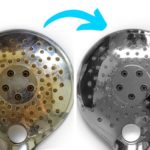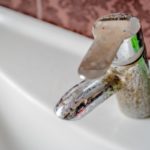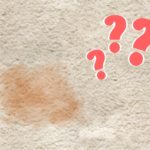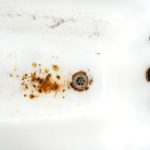Steel is found in objects all over the home, from garden furniture to kitchen knives. It’s wide usage is because steel is a metal alloy made of iron and carbon.
The inclusion of carbon gives steel more strength than iron, making it an ideal material for making resilient objects.
But unfortunately, the iron in the metal alloy means that steel is prone to rusting. Rust forms when iron comes into contact with water and oxygen. This causes a chemical reaction that causes iron oxide (i.e., rust) to form.
This is a common issue, and it is nearly impossible to permanently shield steel from any water and oxygen in the environment to prevent rust formation.
Thankfully, removing rust from steel objects is possible. All you need is the right cleaner, a bit of elbow grease, and some patience.
Read on to learn how to remove rust from steel and protect your items so that they remain rust-free in the future.
How Do You Remove Rust from Steel at Home?
There are a variety of commercial cleaners that can be purchased from your local store to help clean rusty steel.
However, there are also plenty of DIY methods for to remove the rust from around your home that use common household ingredients.
Each option is detailed below so that you can choose the right cleaning method for you!
1. White vinegar
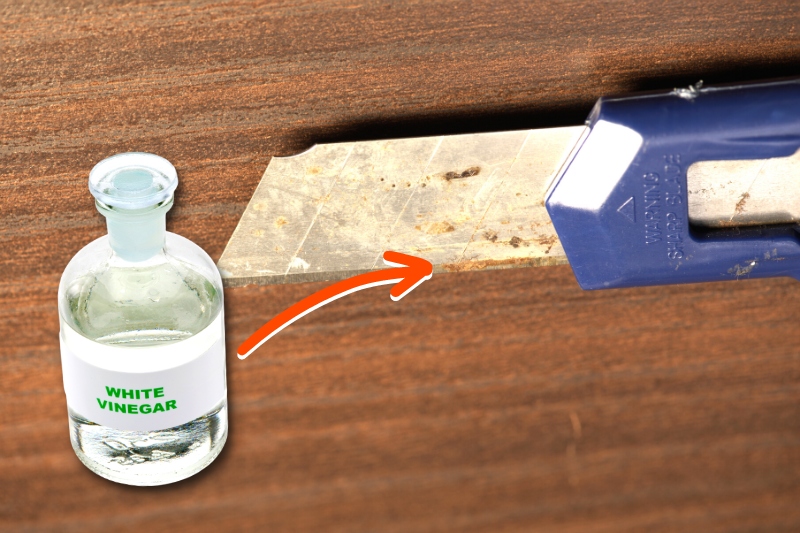
White vinegar is a miracle cure when it comes to household cleaning, and this doesn’t stop when it comes to rust. The acidic nature of vinegar allows the liquid to easily dissolve rust build-up so that it can be wiped away from the steel surface.
The best way to use white vinegar is as follows:
- Submerge the rusty steel in white vinegar for up to 24 hours; OR soak a cloth in the vinegar and wrap it around the rusty area if the item is too big to soak.
- Remove the item from the vinegar once the 24 hours has passed.
- Scrub at any remaining rust marks with either steel wool, a scouring pad, or a wire brush.
- Remove any traces of vinegar with warm soapy water.
- Thoroughly dry the steel surface to prevent further rusting.
2. Bicarbonate of soda

Another common household cleaner is bicarbonate of soda. Its mild abrasiveness allows this fine powder to scrub away at the rust, although it is best suited for use on lighter areas of rust build-up and thin pieces of steel (e.g., knife blades).
To use bicarbonate of soda as a rust remover, you need to:
- Combine two parts bicarbonate of soda with one part water to form a cleaning paste.
- Spread the paste over the rust marks until they are well covered.
- Leave the cleaner to sit for an hour.
- Use either steel wool, a scouring pad, or a wire brush to scrub at the rust.
- Rinse off any remaining paste using a damp cloth or soapy water.
- Thoroughly dry the steel surface.
As an alternative to paste, you can also wet the object and dip it in bicarbonate of soda to form a thick coating. This works well for smaller items, but the steps above will work best the majority of the time.
3. Lemon juice and salt
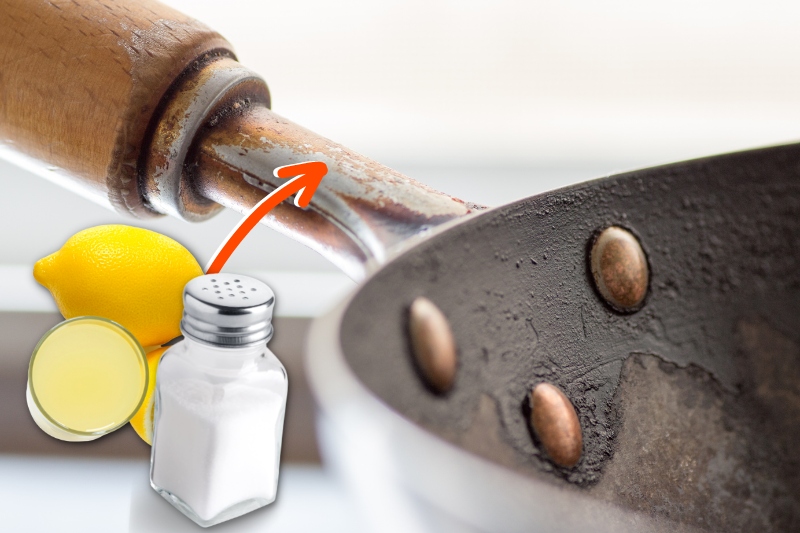
Your next option for removing rust is to use lemon juice and salt. This method of rust removal combines the acidity of lemon with the abrasiveness of salt so that rust is effectively dissolved and scrubbed away at the same time.
You can substitute the lemon juice for lime juice if that is what you have on hand.
To use, you need to:
- Cover the rusted areas with a generous layer of salt.
- Squeeze lemon juice over the top until the salt is saturated.
- Let the mixture sit for 2 hours.
- Use the lemon rind to scrub away at any remaining rust.
- For particularly stubborn patches, use either steel wool, a scouring pad, or a wire brush to rub away the flakes.
- Rinse off the leftover residue and thoroughly dry the steel surface.
4. Washing-up liquid, potatoes & salt

Although this rust removal method may seem a bit out there, but we promise it will give you amazing results! This is because potatoes contain oxalic acid, a substance that easily dissolves rust and is commonly used in commercial cleaning products.
To make use of this unusual yet effective rust removal method, you need to:
- Slice a potato in half
- Cover the sliced section of potato with washing-up liquid and salt
- Rub at the rust build-up using the potato until the steel has come completely clean
- Rinse off any remaining residue
- Thoroughly dry the surface of the steel
5. Coca-Cola
Another cleaner on that is slightly strange is Coca-Cola. This well-loved fizzy drink contains low levels of phosphoric acid, meaning it effectively dissolve any rust build-up in much the same way vinegar would.
To use it effectively, you need to follow the below steps:
- Soak the steel item in a bath of Coca-Cola; OR saturate a cloth with the Coke and wrap it around the rust marks.
- Leave the cleaner to work for 5 minutes.
- Use either steel wool, a scouring pad, or a wire brush to scrub away the rust.
- Rinse off any remaining Coca-Cola to ensure that no sticky residue is left behind.
- Thoroughly dry the steel to avoid further rusting.
6. Aluminium foil
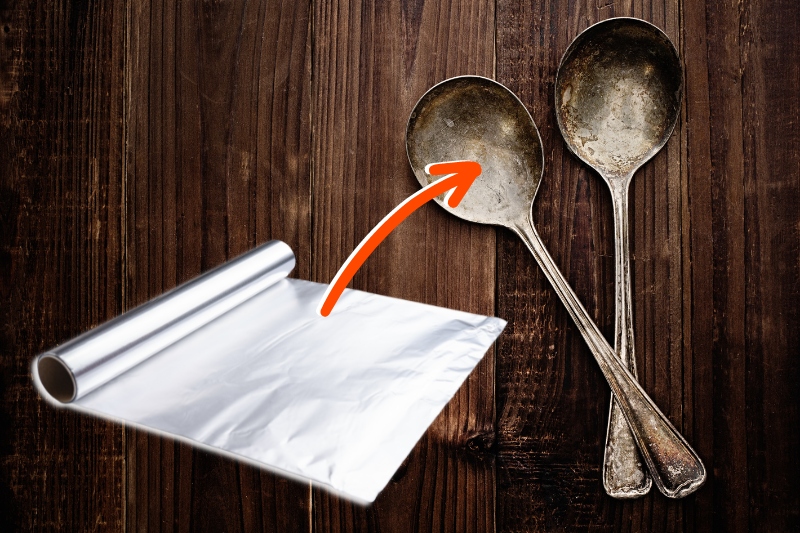
Surprisingly, one of the best rust removal methods involves using aluminium foil. This everyday household item is great to use on any objects with hard-to-reach nooks and crannies, and won’t leave any unwanted scratch marks behind.
For the best results, you need to:
- Lightly wet a sheet of aluminium foil with water
- Rub the wet foil over the rust marks until flakes start to become loose
- Wipe the last traces of rust from the surface using a clean cloth
When following these instructions, make sure you don’t skip the first step. Wetting the aluminium foil may not seem important, but this lubrication causes a chemical reaction that removes the built-up rust from the surface of the steel.
7. Citric acid
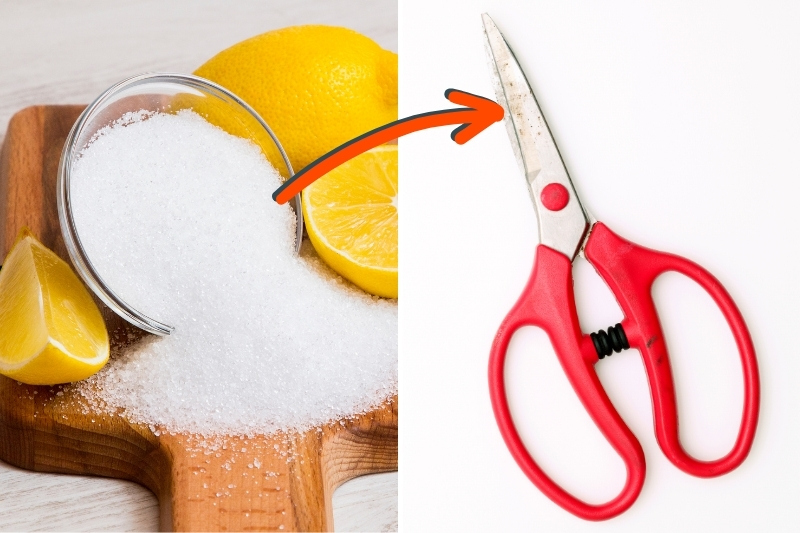
The acid found in lemons and limes (citric acid) can be purchased in a more concentrated form from most health stores.
This is a very effective rust remover, but it will also strip your steel of any paint that is coating it, so bear that in mind before choosing this option.
To use citric acid for rust removal, you need to:
- Add three tablespoons of citric acid to a bowl of hot water
- Submerge the steel in the solution overnight; OR saturate a cloth in the solution and wrap it around the rusted patch
- Remove the steel from the cleaner and use either steel wool, a scouring pad, or a wire brush to scrub at any remaining rust marks
- Rinse any residue off the steel and dry thoroughly
8. Commercial rust remover products
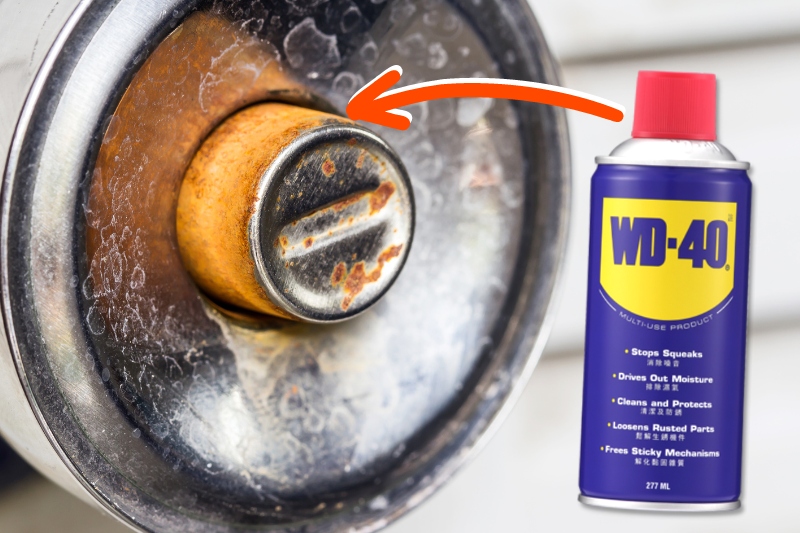
Your final option is to buy a commercial cleaner from your local store. Although any rust remover made for steel will work, WD-40 is one of the most recommended options.
This cleaner can also be used in various other projects around the home, meaning a large bottle is a good investment.
According to the WD-40 website, you should use their cleaner in the following way:
- Use either steel wool, a scouring pad, or a wire brush to remove any loose rust flakes from the surface of the steel.
- Test the WD-40 on an inconspicuous patch of the object to test for any damage.
- Assuming the test went well, apply a layer of WD-40 to the metal.
- Leave the cleaner to sit for 5-10 minutes.
- Use your steel wool, scouring pad, or wire brush to scrub at the rust, starting with thicker areas of build-up and working out towards thinner ones.
- Wipe down the metal to remove any residue.
Using WD-40 in this way will also leave your steel with a protective coating that helps prevent more rust from forming in the future (see below).
How to Prevent Steel from Rusting

Once you have successfully used one of the above methods to remove the rust from any steel items you own, there are a few things you can do to try and protect the metal from further rust build-up.
Complete prevention is impossible, but some of the best ways to minimise rust build-up include:
- Keep your steel items dry: For rust to form, steel needs to come into contact with water, as this catalyses the reaction between iron and oxygen. Drying off steel surfaces as soon as possible and keeping items in low-humidity areas is an easy way to prevent this.
- Apply a protective coating: Substances such as oil, paint, or commercial cleaners (e.g., WD-40) can coat steel and protect it from the elements. This prevents water and oxygen from coming into contact with the steel.
- Galvanise the steel: If you’d like a more resilient solution, you can also have your steel galvanised. This is where a professional will apply a thin layer of zinc over the top of the steel to protect it from exposure to water and oxygen.

Hannah has a passion for cleaning. She worked her way around Australia by cleaning hostels in exchange for free accommodation and used her cleaning skills to bag a job as a chalet host for a luxury ski company in France.

